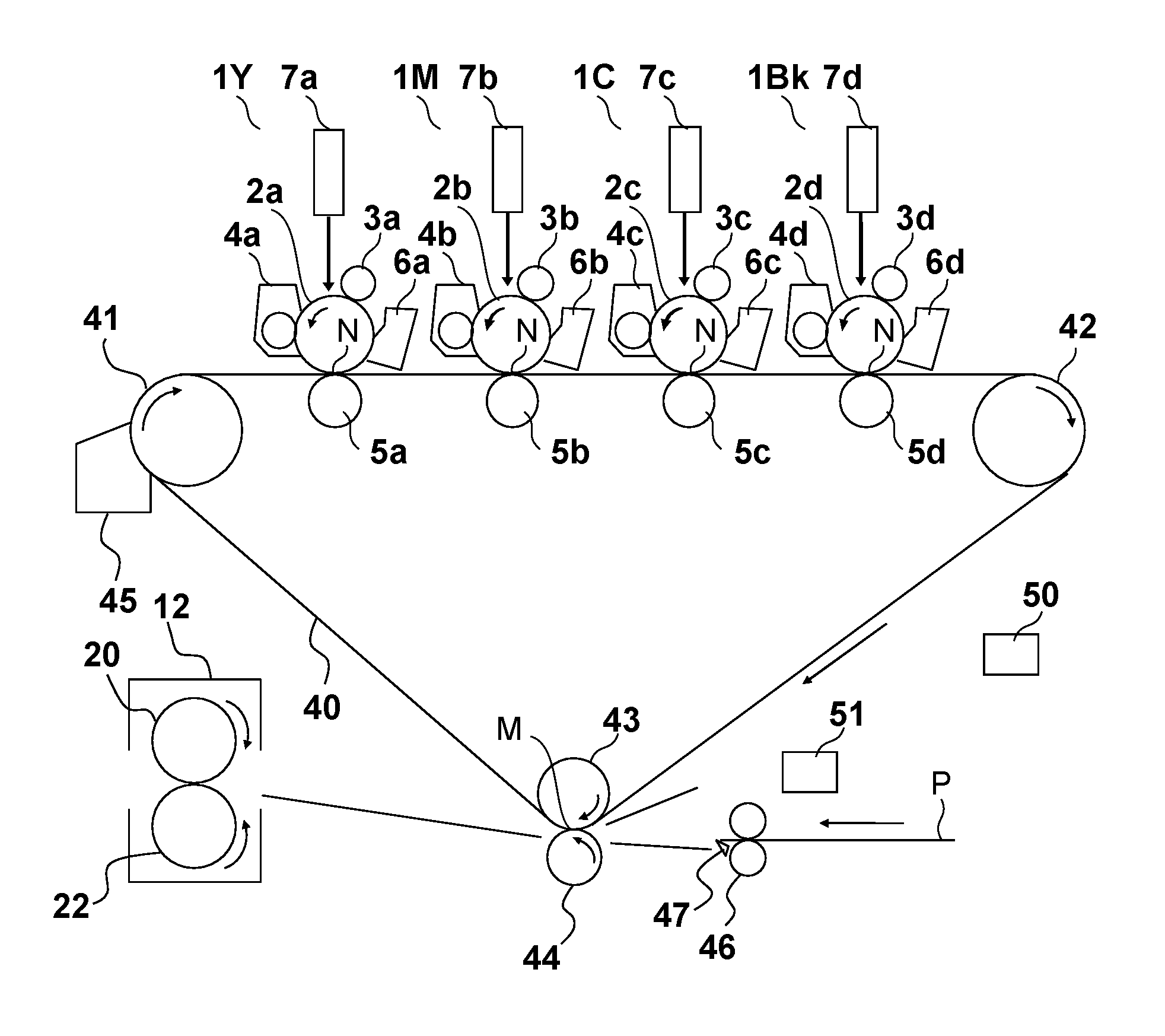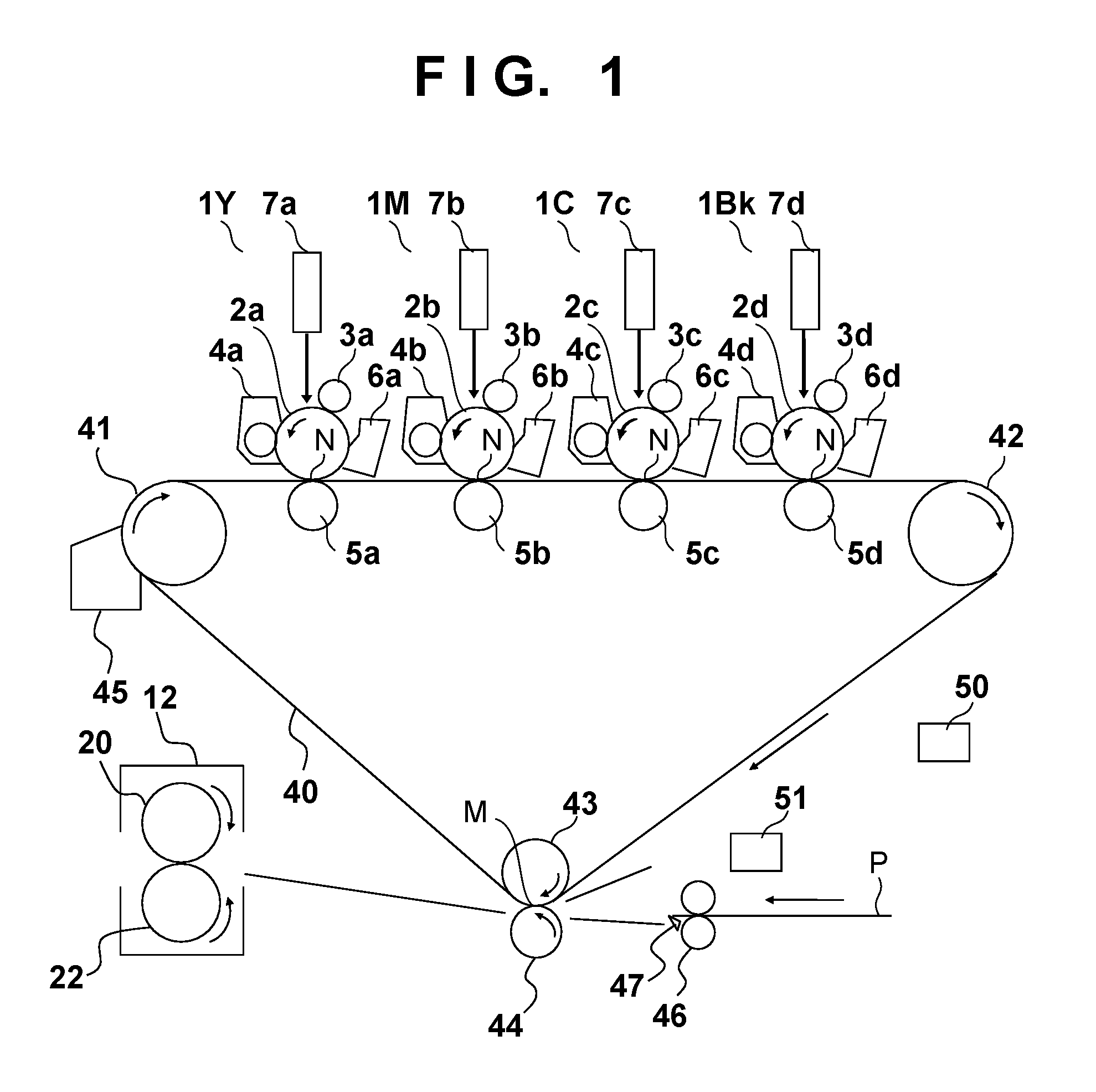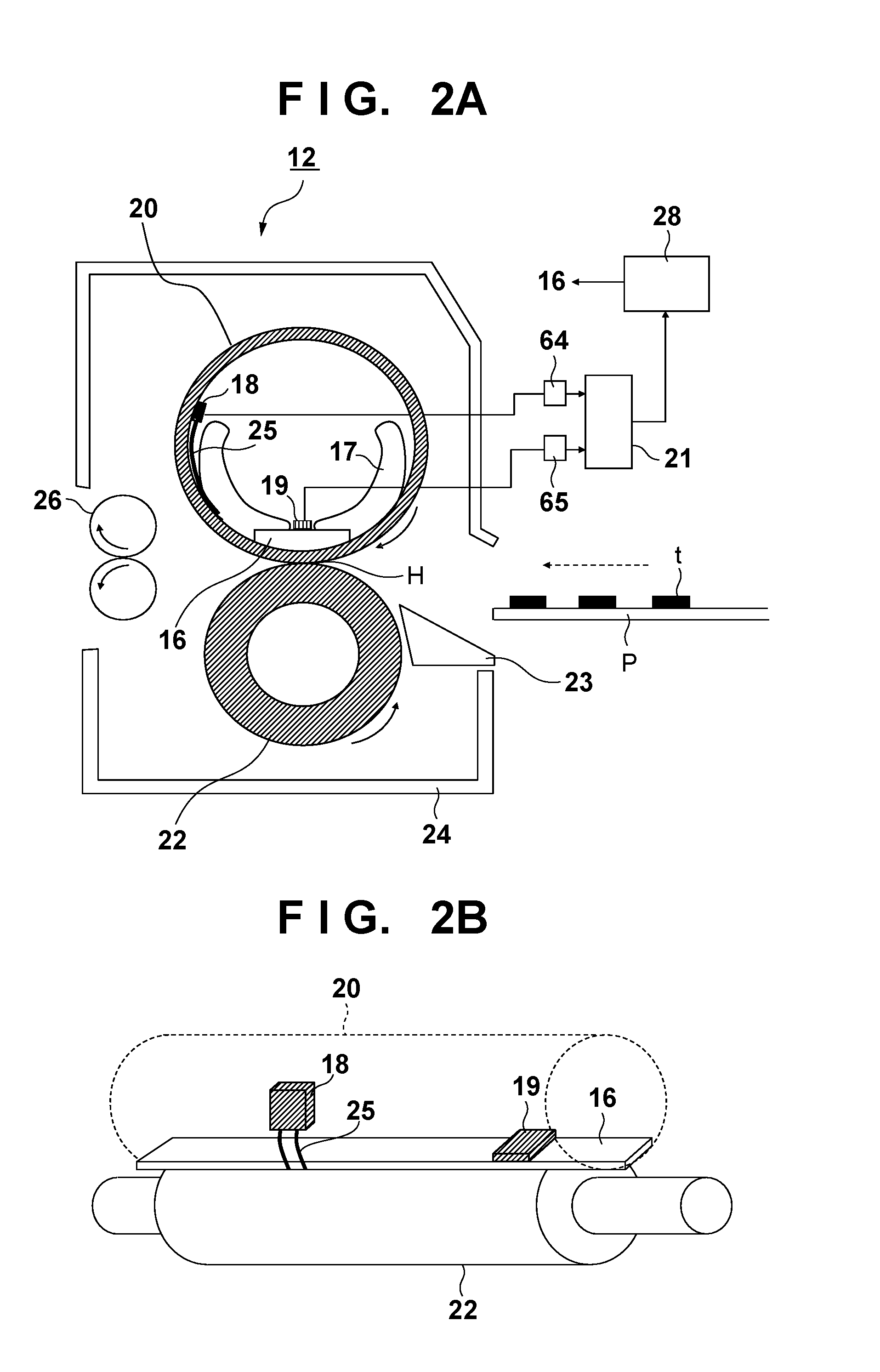Image forming apparatus controlling power supplied to fixing unit
a technology of fixing unit and forming apparatus, which is applied in the direction of electrographic process apparatus, instruments, optics, etc., can solve the problems of low harmonic current but, high flicker noise, and low flicker noise but, and achieve the effect of reducing the gloss unevenness of an imag
- Summary
- Abstract
- Description
- Claims
- Application Information
AI Technical Summary
Benefits of technology
Problems solved by technology
Method used
Image
Examples
embodiment 1
Overview of Image Forming Apparatus
[0030]FIG. 1 is a cross-sectional view showing the configuration of a color image forming apparatus of the present embodiment. This color image forming apparatus is a tandem full-color printer employing an electrophotographic method. The color image forming apparatus is provided with four image forming units, namely, an image forming unit 1Y that forms a yellow image, an image forming unit 1M for magenta, an image forming unit 1C for cyan, and an image forming unit 1Bk for black, which are disposed in a row at fixed intervals. Photosensitive drums 2a, 2b, 2c, and 2d are respectively installed in the image forming units 1Y, 1M, and 1C and 1Bk (hereinafter, simply referred to as image forming units 1). The letters a, b, c and d respectively correspond to Y (yellow), M (magenta), C (cyan) and Bk (black), and hereinafter will be abbreviated as a˜d (or a, b, c and d) unless otherwise required. A charging roller 3, a developing apparatus 4, a transfer ro...
embodiment 2
[0084]In Embodiment 1, the power supply rate update timing and the power correction start timing were made to coincide, by adjusting the image forming start timing based on the power supply rate update timing. The power correction start timing is determined based on the entry timing of the printing material P to the heating nip portion H, with the entry timing of the printing material P to the heating nip portion H being predicted using the conveyance start timing of the printing material P by the registration roller 46 as a basis in the present embodiment. Since the conveyance start of the printing material P can be accurately detected with operation of the registration roller 46, the power correction timing can be determined using the conveyance start timing of the printing material P as a basis, regardless of the image forming start timing. Accordingly, it can be said that adjusting the conveyance start timing of the printing material P based on the power supply rate update timin...
PUM
 Login to View More
Login to View More Abstract
Description
Claims
Application Information
 Login to View More
Login to View More - R&D
- Intellectual Property
- Life Sciences
- Materials
- Tech Scout
- Unparalleled Data Quality
- Higher Quality Content
- 60% Fewer Hallucinations
Browse by: Latest US Patents, China's latest patents, Technical Efficacy Thesaurus, Application Domain, Technology Topic, Popular Technical Reports.
© 2025 PatSnap. All rights reserved.Legal|Privacy policy|Modern Slavery Act Transparency Statement|Sitemap|About US| Contact US: help@patsnap.com



